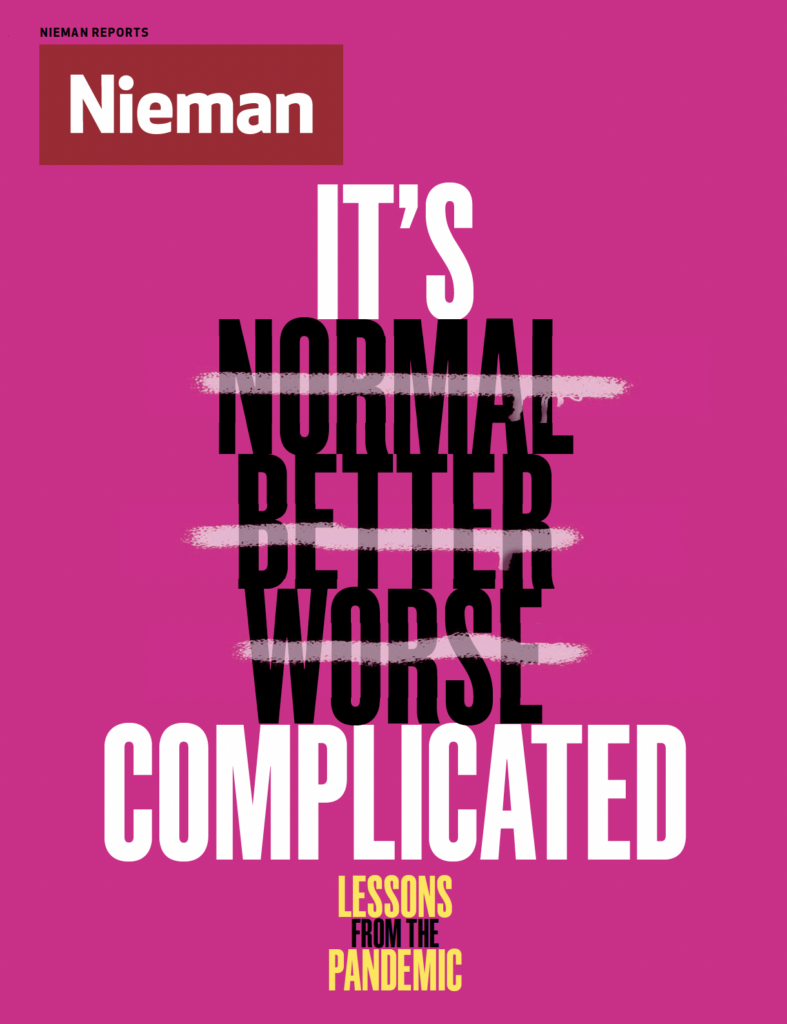I never found out if I caught the coronavirus – tests weren’t readily available at the time – though it soon became clear that I had been socializing, precociously and sans mask, in two hot spots during the initial stages of the virus’ spread. That early brush with what would soon become an all-consuming crisis made me realize, sooner than I might have otherwise, that my job as a food writer for The New York Times was about to drastically change.
I had been working at the Times for less than a year when the pandemic began, and I was still adjusting to being a national correspondent after working at local newspapers for 25 years: in the Twin Cities, Washington, D.C., and New Orleans, where I was restaurant critic and features writer at The Times-Picayune for nearly 20 years, and where I still live.
Much of the Times Food staff concentrates on developing recipes and writing about cooking, an activity readers turned to en masse during the lockdown. I’m among a smaller group of reporters and critics who cover restaurants.
Suddenly, restaurants everywhere were closed, temporarily and permanently, or only partially open. Within weeks, eight million restaurant employees were out of work, according to the National Restaurant Association. Dining rooms as we knew them were potentially dangerous, for both customers and staff.
The slate of features and profiles I was set to write in the months ahead, a few of which I’d already traveled to report, pertained to a world that no longer existed. After contributing reporting to breaking news stories about restaurants closing across the country, I wrote an early pandemic piece about what I was hearing from restaurant people where I live: that this health crisis was more difficult to navigate than even Hurricane Katrina in 2005.
The story doubled as a personal reminder that I had relevant experience to draw on. In New Orleans, Katrina wasn’t just a deadly storm. If you lived in southeast Louisiana in the mid 2000s, it was an exhausting, inescapable fact of life that blocked out the sun for years. (By my count at least until 2010, when all eyes turned to the BP oil spill.)
But in the weeks and months after the storm, it was hard not to be frustrated by the inability to capture the enormity of the disaster with any one byline. Last spring, as I watched the food system crack, largely due to the crumbling of the dining culture I’d covered for half of my life, I thought of Katrina and took a deep breath. I reminded myself that we were going to be living this story, not just covering it – and that it wouldn’t end anytime soon. My mantra: This is a marathon, not a sprint.
Having the luxury of working for a resource-rich news organization, where business reporters, national correspondents, and fellow food journalists all worked to document our buckling food system, I looked for local stories that spoke to the national crisis: food banks in South Florida, where the harvest season comes early, struggling to meet a spike in demand while food went to waste on local farms; a beloved North Carolina chef whose obsession for corned ham could inspire housebound home cooks; a celebrated Chicago restaurant whose staff revolted over abusive treatment by its chef-owner.
The Chicago story came in June, as the national outrage over the killing of George Floyd compelled restaurant workers across the country to speak out against pay inequities and workplace harassment and abuse that falls disproportionately on immigrants, people of color, women and members of the LGBTQ community. If Covid revealed, as many owners argued, that the business model for restaurants was broken, the calls for racial justice that followed the killing of George Floyd amplified the voice of restaurant workers testifying that the old model never worked for them.
I started writing about restaurants in the mid-'90s, when the job, at least as it was practiced at most mainstream publications that could pay food writers a living wage, was primarily about pleasure – service journalism for readers privileged enough to obsess over where to spend their money dining out. Change to the field came too late, but it did come, in 2017, when the #MeToo movement brought a still-unfolding reckoning over sexual harassment and discrimination to the restaurant business.
The crises of the past year have deepened that reckoning, forcing much of the country to reexamine why inequities persist in American life. (One of the best-read stories I’ve written for the Times was about how that reexamination impacted the way Americans celebrated our last Thanksgiving.) Racial and gender imbalances have long been on display in American restaurants – in the divide, for instance, between dining room and kitchen employees, and between restaurants that traditionally capture the attention of mainstream media and those that don’t.
In the years ahead, the work of food journalists will need to look a lot like it did this past year: a balance of service journalism and stories that make people feel good (we still need those), and hard news reporting about a business that is undergoing historic change and a labor force that has gone unnoticed for too long.
Brett Anderson, a 2013 Nieman Fellow, is a food writer for The New York Times.
Lessons from the Pandemic
Hope that the coronavirus is finally being brought under control has given rise to planning for a return to “normal.” But can, or should, journalism return to a pre-pandemic “normal?” Across newsrooms, the way we once covered education, labor, theater—any beat—is unlikely to be sufficient for the moment we are entering. What are the lasting lessons of this time, and how should we do journalism differently? These are the questions to which Nieman Reports is seeking answers in our essay series, Lessons from the Pandemic.




